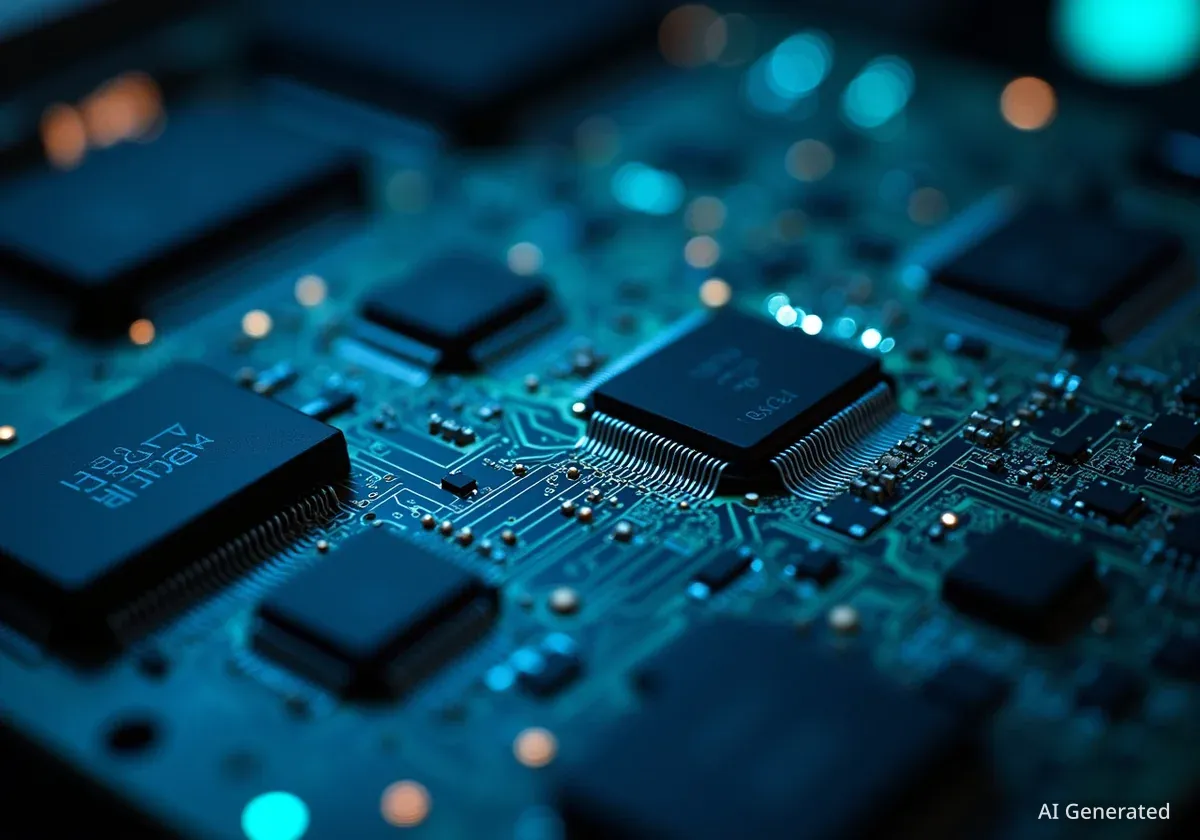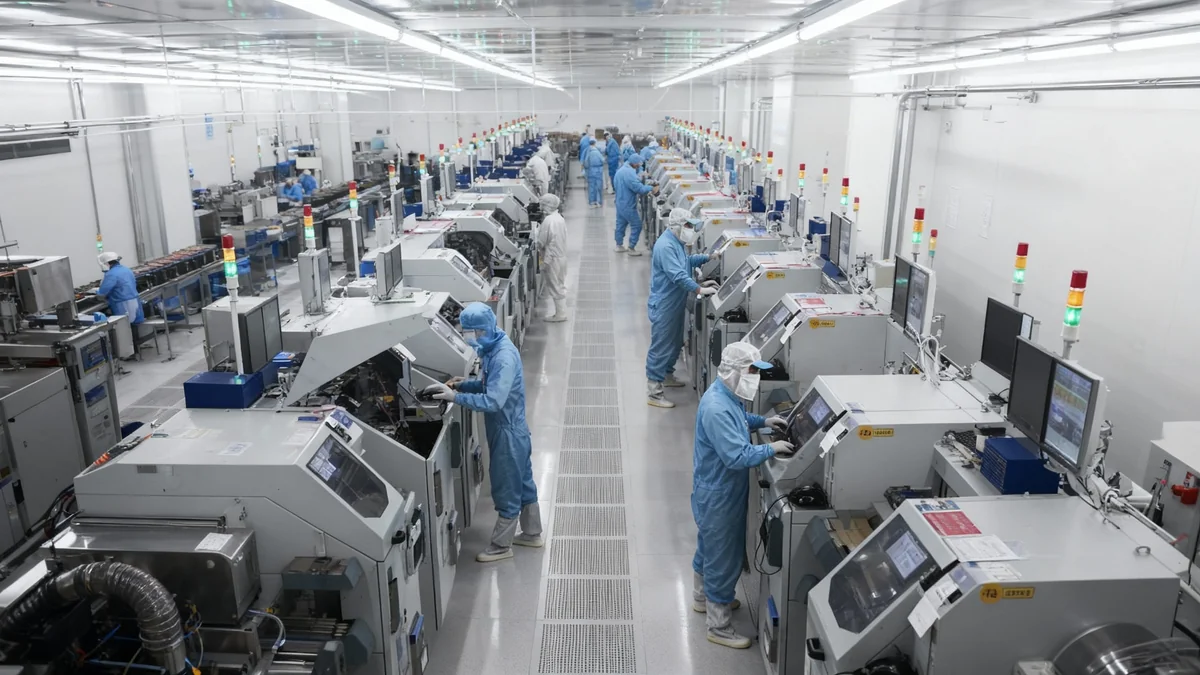The United States has moved to regulate artificial intelligence (AI) through new export controls. This policy shift, enacted by the Biden Administration, makes the U.S. one of the first nations to specifically target AI in its export regulations. The aim is to manage the international flow of advanced AI technology, aligning with similar efforts by other global powers.
The new rule, finalized in January 2025 by the U.S. Department of Commerce, focuses on enabling American companies to export AI technology responsibly. It also seeks to prevent advanced AI capabilities from reaching certain nations. This marks a notable change from past U.S. approaches, which often favored less regulation in emerging technology sectors.
Key Takeaways
- The U.S. issued new regulations on AI export controls in January 2025.
- This policy aims to allow safe export of AI while restricting access for countries of concern.
- The rule exempts U.S. allies from certain export limits on AI chips.
- This move reflects a broader global trend toward regulating advanced technology.
- The U.S. approach differs from the EU's risk-based framework and China's state-led model.
Understanding the New U.S. AI Export Rule
The U.S. Department of Commerce published the final rule early in 2025. Its primary goal is to ensure American companies can "safely export AI technology abroad," as stated by Michael C. Horowitz of the Council on Foreign Relations. This framework allows for the export of AI chips and capabilities to most international markets.
A key aspect of the regulation is its differentiation between countries. U.S. allies are exempt from rules that limit the quantity of exportable chips. Conversely, the United States will not export AI chips to "countries of concern." These are nations currently under U.S. arms embargos.
"The rule is an ambitious act of economic and technological policymaking," according to the Carnegie Endowment for International Peace, a prominent foreign policy think tank.
The current administration reinforced this rule. President Donald J. Trump issued an executive order designed to "identify and eliminate loopholes in existing export controls." This shows a unified government focus on tightening technology export policies.
Fact: Policy Evolution
Historically, the U.S. hesitated to regulate AI heavily due to fears of stifling innovation. Industry leaders often voiced concerns that excessive regulation could hinder AI development just as it gained momentum. However, recent years have seen a shift towards more controls on emerging technologies.
Broader Context: Restricting Access to Advanced Technology
This year's Commerce Department rule builds on previous measures. Late last year, the Biden Administration amended export controls for semiconductors. Gregory C. Allen at the Center for Strategic and International Studies noted that the 2024 rule aimed to prevent China from accessing advanced AI chips. It also sought to limit China’s ability to produce these chips domestically or obtain alternatives.
Restricting China's access to AI and advanced semiconductor technologies has been a U.S. government focus since 2022. This ongoing policy aims to protect national security interests and maintain technological leadership.
Digital Sovereignty Explained
The concept of digital sovereignty is gaining importance globally. Sean Fleming of the World Economic Forum defines it as "the ability to have control over your own digital destiny." This means countries want to control the infrastructure, data, and design of technology within their borders. The competition for this control reflects wider debates over national sovereignty.
International Approaches to AI Regulation
The U.S. is not alone in its efforts to regulate AI. Other countries and blocs are also developing their own frameworks. These international efforts highlight a global recognition of AI's growing impact and the need for governance.
European Union's Risk-Based Model
In August last year, the European Union passed a significant regulation. This rule seeks to "harmonize" the development, commercialization, and use of AI technologies across its member states. The European Commission stated that these rules aim to "foster trustworthy AI" in Europe.
- The EU regulation classifies AI applications into different risk categories.
- These categories are based on the AI's potential impact on individuals and society.
- Unlike the U.S. rule, the European approach does not target specific countries.
- Instead, it focuses on regulating the risk level of the AI itself.
Scholars believe the European regulation could become a global standard for AI governance. Its comprehensive, risk-based framework offers a different model compared to the U.S. export controls.
China's State-Led Approach
China adopts a different strategy, characterized by a state-run approach. A top priority for China is to "retain control of information." China actively encourages domestic innovation in generative AI, investing significantly in non-state actors, including corporations.
The U.S.–China Economic Security Review Commission reported that these investments aim to further China's technology development goals and policy objectives. This commission was established in 2000 to advise Congress on the national security implications of the U.S.–China relationship.
China's government-led model for digital sovereignty and AI regulation stands in contrast to the traditional U.S. stance. Historically, advocates for an unregulated cyberspace, particularly within large tech companies, played a dominant role in the United States.
A Shift in U.S. Policy
The new U.S. rule limiting AI exports signals a fundamental change. It moves the United States closer to a government-led approach to regulating internet and technology. This shift aligns the U.S. more with the regulatory frameworks seen in other major economies.
Industry Preferences for Regulation
Major tech companies, like Google, have expressed their preferences regarding regulation. Google states it builds compliance into product development. The company prefers regulations to be stable and predictable. For this reason, big players in AI technology would prefer a coordinated approach moving forward, as noted by the Digital Watch Observatory.
The Centre for International Governance Innovation, a Canadian think tank, suggests that corporations, as non-state actors, could play a role. They might contribute to new multilateral cooperation efforts or help set industry standards. This highlights the potential for public-private collaboration in shaping AI governance.
Statistical Insight
The global AI market is projected to grow significantly. Reports suggest it could reach over $1.8 trillion by 2030, up from approximately $150 billion in 2023. This rapid expansion underscores the urgent need for clear international regulatory frameworks.
Future of Global AI Regulation
The U.S.'s unilateral rulemaking effort may encourage other countries to enact similar measures. This could, in turn, bring the world closer together on AI regulation, as suggested by the Brookings Institution. However, experts also argue that universal collaboration on AI regulation is unlikely.
The differing national interests and technological priorities mean a single, unified global AI regulation framework remains a distant goal. Instead, a patchwork of national and regional regulations is more probable. This will require ongoing international dialogue and cooperation to manage the complex challenges and opportunities presented by AI.





